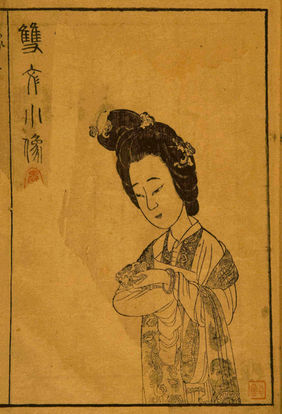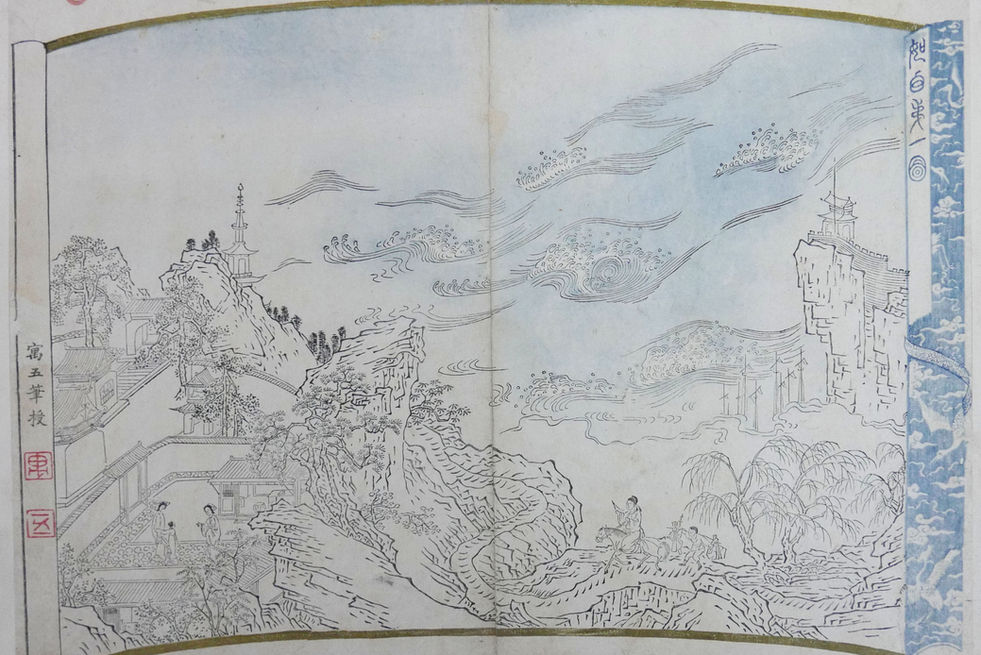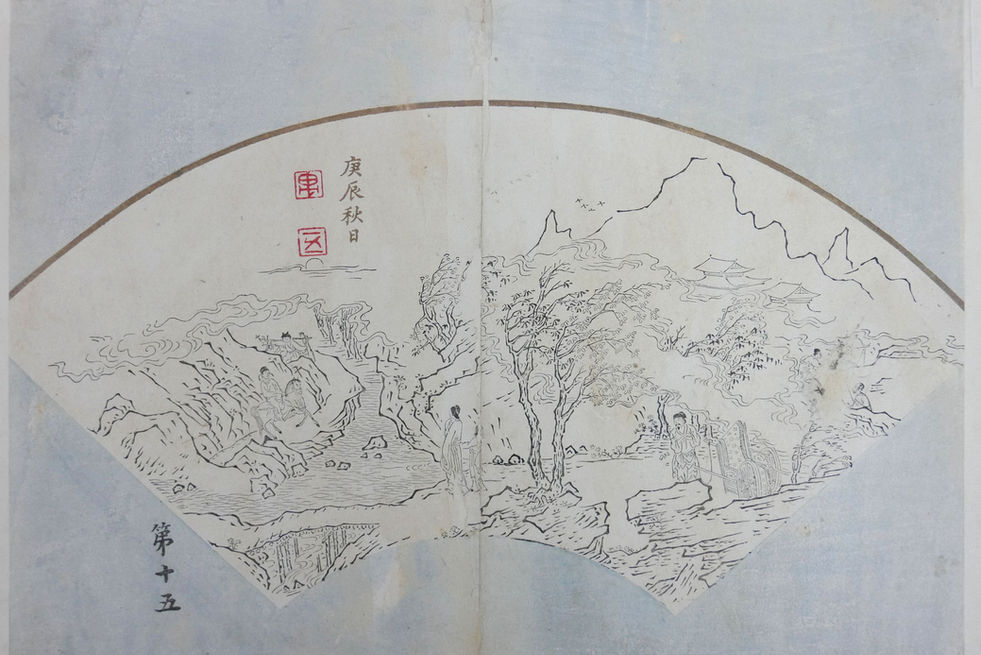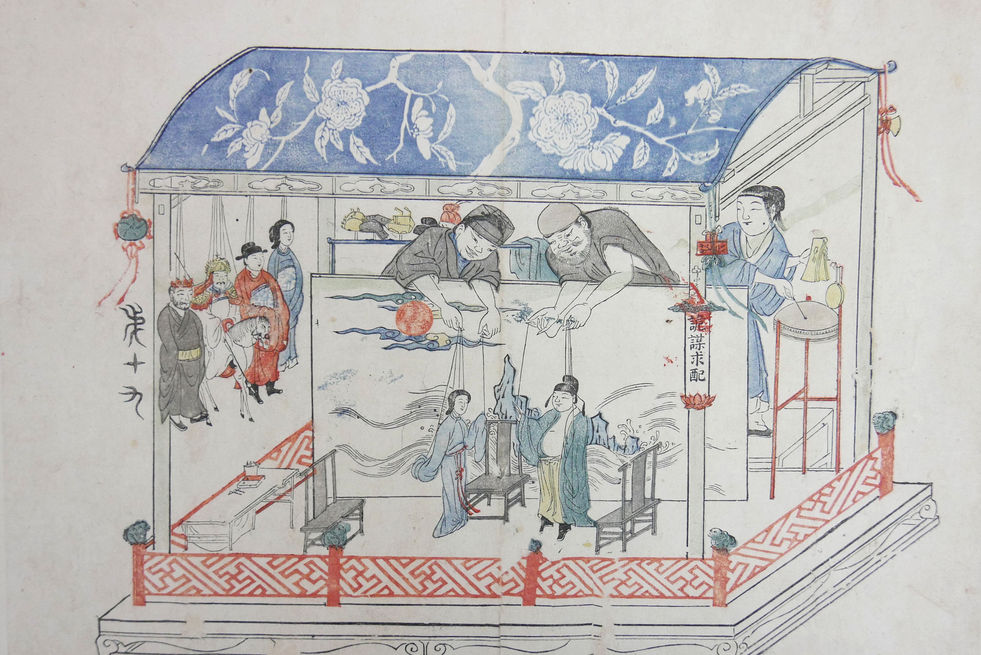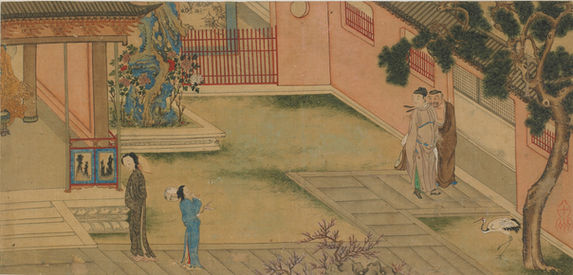The Story of the Western Chamber
The Story of the Western Chamber
Author: Gen Hu '20
The romance of Western Chamber is one of the most famous literary Chinese works. The tale was written by playwright Wang Shifu during the Yuan Dynasty. The story narrates the love story of a young couple, who without the approval of their parents, consummate their relationship and delve into a relationship. The story, though written centuries ago, still holds cultural relevance to this day with films and television shows based on the play. Most significantly, the piece has been translated to hundreds of art works made by famous Chinese artists.
Written during the seventeenth century, the play was originally deemed too controversial and immoral because of its implicit scenes of pre-martial sexual intercourse. However, despite its themes, the text still grew to be very popular. This was partially in result of the increasing demands of the wealthy urban class. Their taste for culture encouraged the texts popularity and the following illustrated versions of the text. One of these illustrated recreations include prints made by famous late Ming printer Min Qiji (1580-1661).
Panopticon in the Romance of the Western Chamber Image
Author: Nick Stauffer-Mason '20
This iconic illustration Scenes from Romance of the Western Chamber is painted from a unique perspective—the viewer sees the plot from above as it plays out in a series of stone houses and courtyards. This perspective gives the viewer a uniquely powerful position—we see the characters in the narrative as figurines, frozen in time and bounded by architectural space, unaware that their exploits are visible to a higher power.
In essence, the print is a Panopticon—a structure in which every individual is observable from a central position, the focus of whose gaze is unknowable to those being surveilled. This perspective in turn reduces the agency of the human figures depicted in the scene—though the characters, engrossed in their activities, clearly believe themselves to be autonomous, they are in fact confined to a bounded world whose limitations are outside their knowledge and control.
Liling Hsiao has used the term “embedded realities” to describe the fascinating juxtaposition of worlds created by this separation of the viewer’s perspective from the subjects’. Examining work by Min Qiji—the creator of another famous representation of Romance of the Western Chamber—Hsiao notes that viewing a confined scene from above suggests “deliberate manipulation” of the lower-level subjects, whose activities are predestined and catalogued by an implied power above rather than of their own choosing.[1]
Thus, by raising the viewer up into a position of panoptic power, Xi diminishes the characters’ power over themselves and their space, calling into question the agency of not just the characters but the viewer as well—given the fact that the characters’ lives, hopes, and aspirations must be similar to our own, Xi forces us as viewers to grapple with our own complex relationship to destiny and self-direction.
[1] Li-Ling Hsiao, The Eternal Present of the Past: Illustration, Theater, and Reading in the Wanli Period, 1573-1619 (Brill, 2007), 216-17.
Chen Hongshou, Illustrations for The Story of the Western Chamber, edited by Zhang Shenzhi (1639)
The Story of the Western Chamber, edited by Min Qiji
1640, multi-color woodblock print. Museum für Ostasiatische Kunst Köln
Vase with 24 scenes from The Story of the Western Chamber
ca. 1690-1700, porcelain painted in underglaze blue, Victoria and Albert Museum

Eight scenes from The Story of the Western Chamber
18th-19th century, album leaves, ink and color on silk, Freer and Sackler Galleries
Scenes from The Story of the Western Chamber
Qing dynasty, 1747, Woodblock print mounted as a hanging scroll; ink and color on paper,
with hand-applied color. Harvard Art Museums
